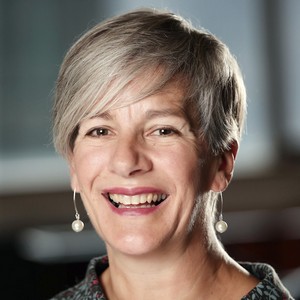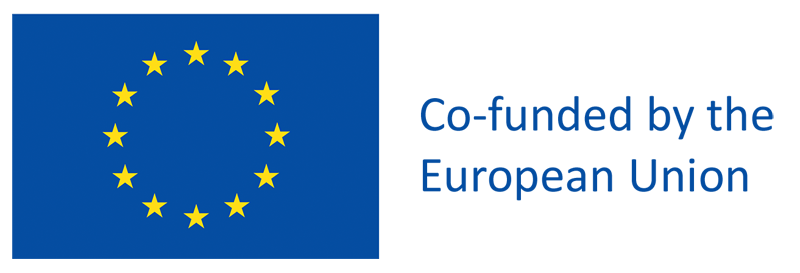Siobhán Freeney is the coordinator of the MammoScreen Project Patient Advisory Group (PAG).
She was diagnosed with stage 3 Invasive Lobular Carcinoma (ILC) in December 2015 and, following extensive treatment and surgery in 2016, she became a patient advocate.
Siobhán set up Ireland’s first Breast Density patient advocacy blog and passionately campaigns to raise awareness about ILC and how it can escape early detection with X-ray mammography in women with high density breast tissue.
MammoScreen (MS): Siobhán, in your blog you mention that 40% of women have dense breasts. Can a women know if she has dense breasts without undergoing a mammography?
Siobhán Freeney (SF): The experts say that 43% of women have dense breasts. Breast density is not palpable, so women cannot know by feeling their own breasts. Having a mammogram is, at the moment, the only imaging tool routinely available to women to determine if they have dense breasts. Unfortunately, the ECIBC (European Commission Initiative on Breast Cancer), have not issued specific guidelines to mandate for women to be notified about their breast density. There are recommendations from EUSOBI (European Society of Breast Imaging), that all women should be notified about their breast density. Quoting them: “After careful consideration of the evidence, particularly the results of the Dutch DENSE trial, EUSOBI now recommends that women with extremely dense breast tissue are offered screening with breast MRI. In these women, breast MRI can reduce the mortality from breast cancer and is highly cost-effective”. Read the full article here.
MS: In a rough estimate, from your patient contacts, what is the percentage of women that are not aware of the relative breast density and how much can it hinder the early detection of breast cancer?
SF: Approximately 7 out of 10 women do not know about their breast density. There are studies to indicate that 50% of breast cancers are missed on screening mammograms of women with dense breasts. As women, we rely on our screening programmes for early detection of cancer. For almost half of women within a breast cancer screening programme, a mammogram alone is not enough. Breast cancer early detection is all about finding cancers when they´re small and node negative; that is really important. In my experience, there are way too many cancers being missed as a direct result of breast density. There is a lack of shared informed decision making and I would also add that the introduction of a standardized breast density notification with additional essential imaging is crucial.
MS: Why do you think women are still unaware of their relative breast density and the limitations of X-ray mammography?
SF: Women are still unaware because nobody is telling them. When a woman receives her letter telling her that her mammogram is clear, she has no reason to believe otherwise. When a radiologist looks at a mammogram of a woman with dense breasts, the level of breast density is clearly visible, but this information is not disseminated. There are specific limitations of X-ray mammography. Breast density appears as white and bright regions on a mammogram, cancer also appears as white. In non-dense breasts, a cancer will be visible to the radiologist. However, in dense breasts, small cancers can be “masked”. This is often referred to as looking for a snowball in a snowstorm.
MS: Tell us one interesting fact about invasive lobular carcinoma (ILC).
SF: ILC is a unique histological subtype and it is different to other types of breast cancer. It´s the second most common subtype of breast cancer and accounts for 15% of all breast cancer diagnosis. ILC originates in the lobules, whereas the more common ductal breast cancer (80%) originates in the milk ducts (see diagram). Across Europe, approximately 86,500 women will be diagnosed with ILC every year. Upwards of 30% of lobular breast cancers are missed on screening mammography. Lobular breast cancer cells lack a protein called E-Cadherin, meaning the cells do not grow as a lump, they grow as single-cell lines. This unique growth means that they often go undetected on a mammogram. For women with dense breasts, only 11% of lobular breast cancers are likely to be picked up on screening mammograms.
MS: Can you say a few words about your hopes regarding the MammoScreen Project?
SF: My hope would be that MammoScreen, coupled with AI, can begin to address some of the issues around screening, for younger women in particular, and issues related to breast density.
MS: Is there a specific message you would like to pass on to our readers, both as a woman and a patient representative?
SF: As a woman, I had no history of breast cancer in my family. I never missed a screening mammogram. I believe that all women should attend their breast screening appointments and carry out monthly self-check breast exams. Finally, I would add that it is vital that every woman asks about their personal level of breast density and if they have dense breasts then, please, discuss additional imaging by ultrasound or MRI. If I had known that I had dense breasts, my 7 cm tumour would not have gone undetected; it would have been diagnosed earlier because I would have known to ask for supplemental imaging. This is so important.
The MAMMOSCREEN Team heartfelt thanks Siobhán for giving this interview and her precious advocacy role for the project.
Please visit www.beingdense.com and follow Siobhán on LinkedIn.
This article is part of #1 issue of MAMMOSCREEN newsletter: read the full issue here.







